SpaceX Crew Dragon undocks from space station to bring NASA astronauts home for 1st time
The first astronauts to fly in SpaceX's Crew Dragon spacecraft are on their way back to Earth from the International Space Station.
NASA astronauts Bob Behnken and Doug Hurley, who spent about two months at the space station following the historic launch of the Demo-2 mission on May 30, climbed aboard their Crew Dragon spacecraft today (Aug. 1) and began their 19-hour trip home with a smooth undocking at 7:35 p.m. EDT (2335 GMT). Both craft were sailing nearly 270 miles (430 kilometers) above Johannesburg, South Africa at the time.
"It's been a great two months and we appreciate all you've done as a crew to help us prove out Dragon on its maiden flight," Hurley told the station's crew just after undocking. "We look forward to splashdown tomorrow."
"Safe travels and have a successful landing," station commander Chris Cassidy of NASA replied. He rang the a "ship's bell" on the station as they departed. "Endeavour's a great ship. Godspeed."
Video: SpaceX Demo-2's Crew Dragon undocks from space station
Full coverage: SpaceX's historic Demo-2 Crew Dragon astronaut test flight

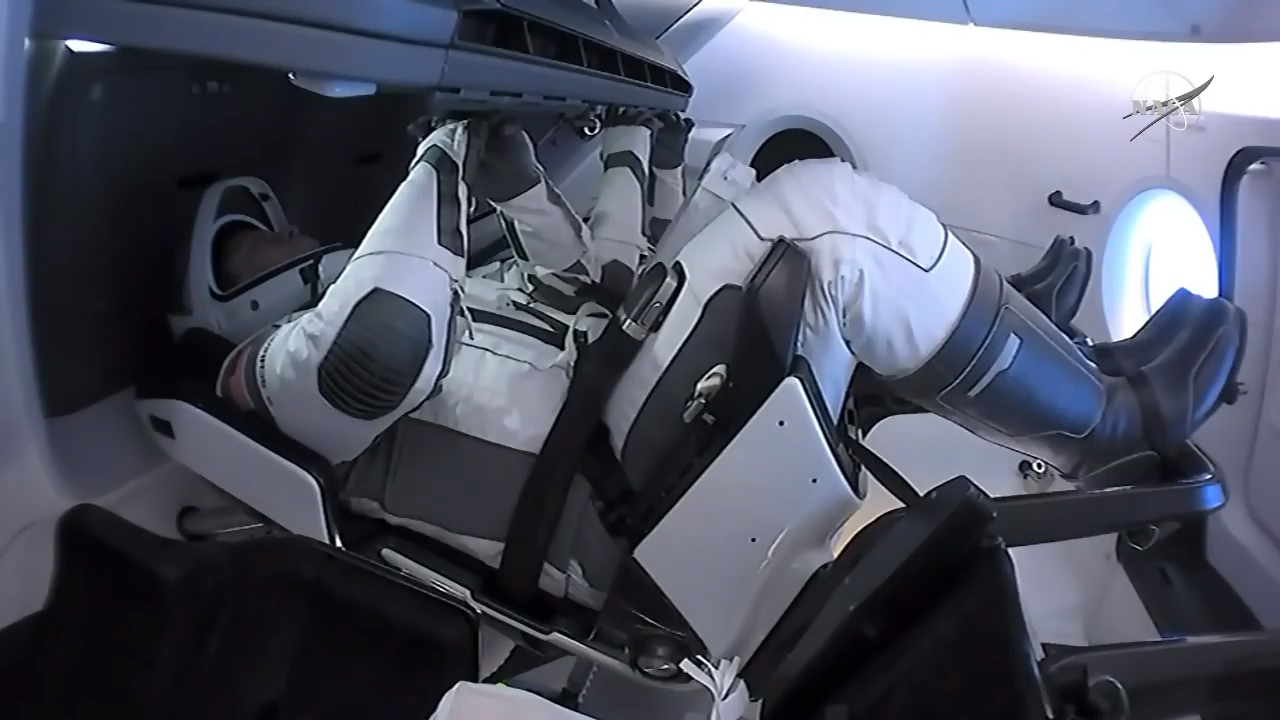
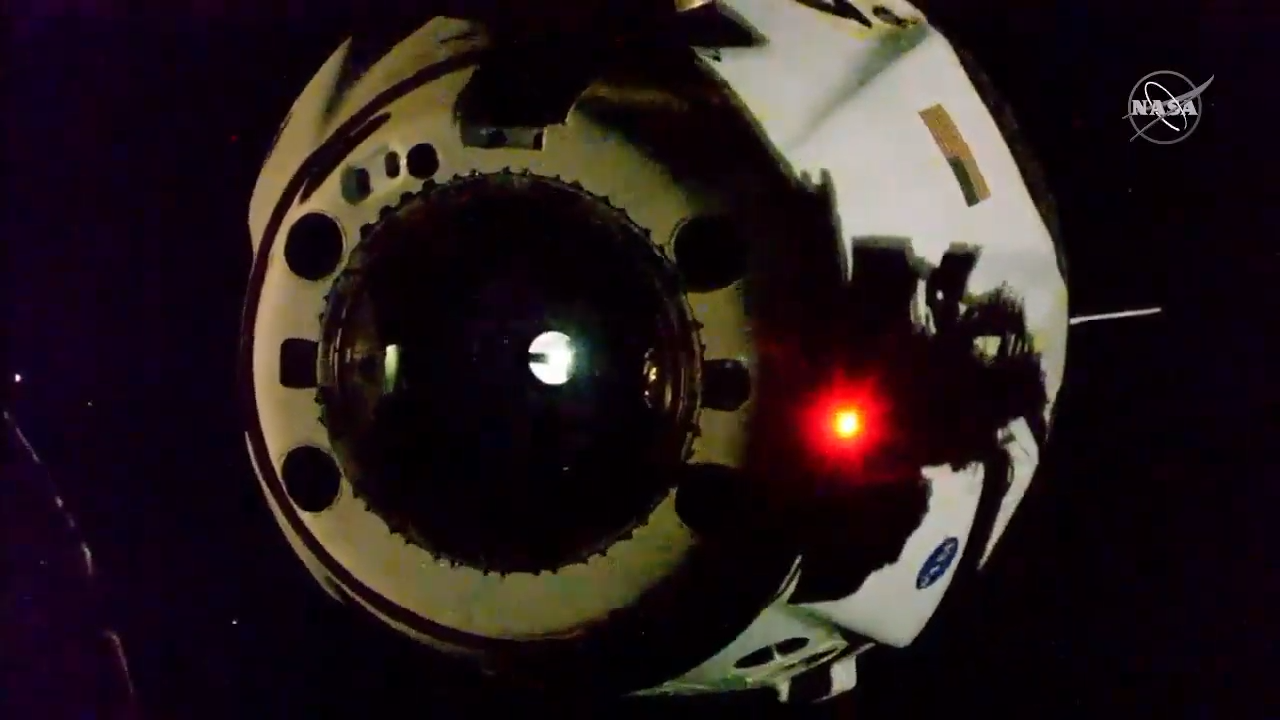

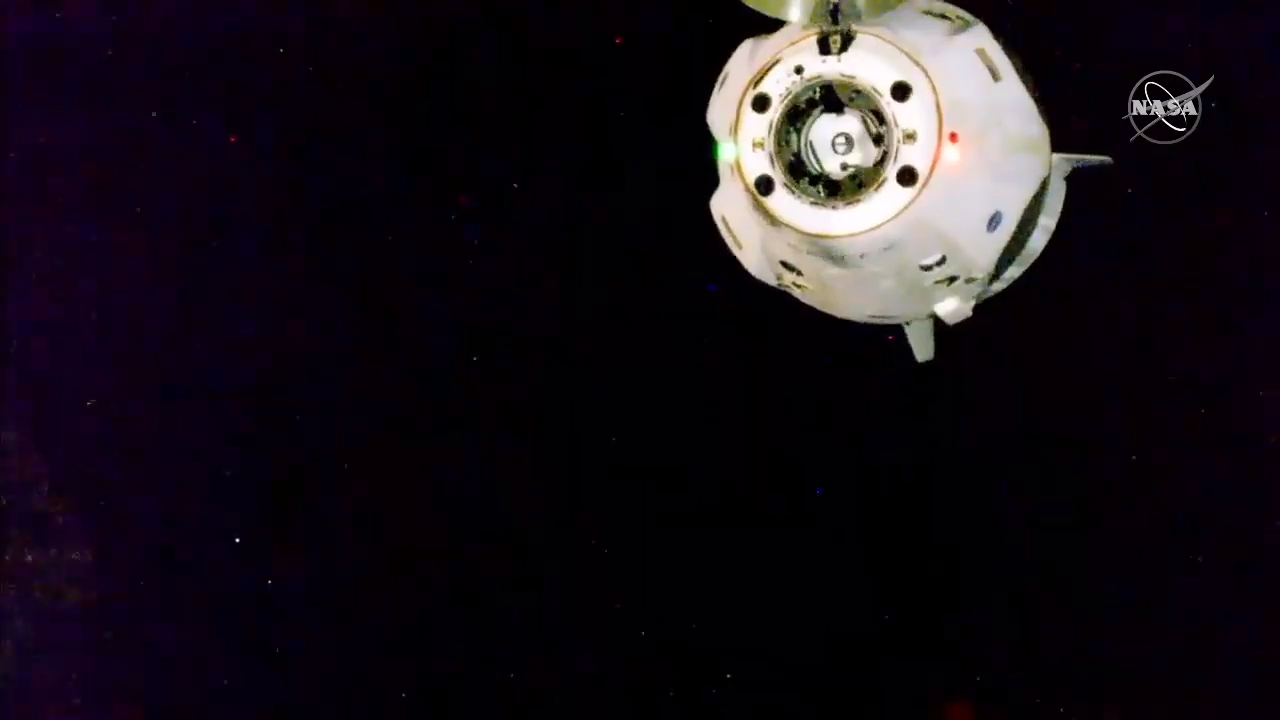
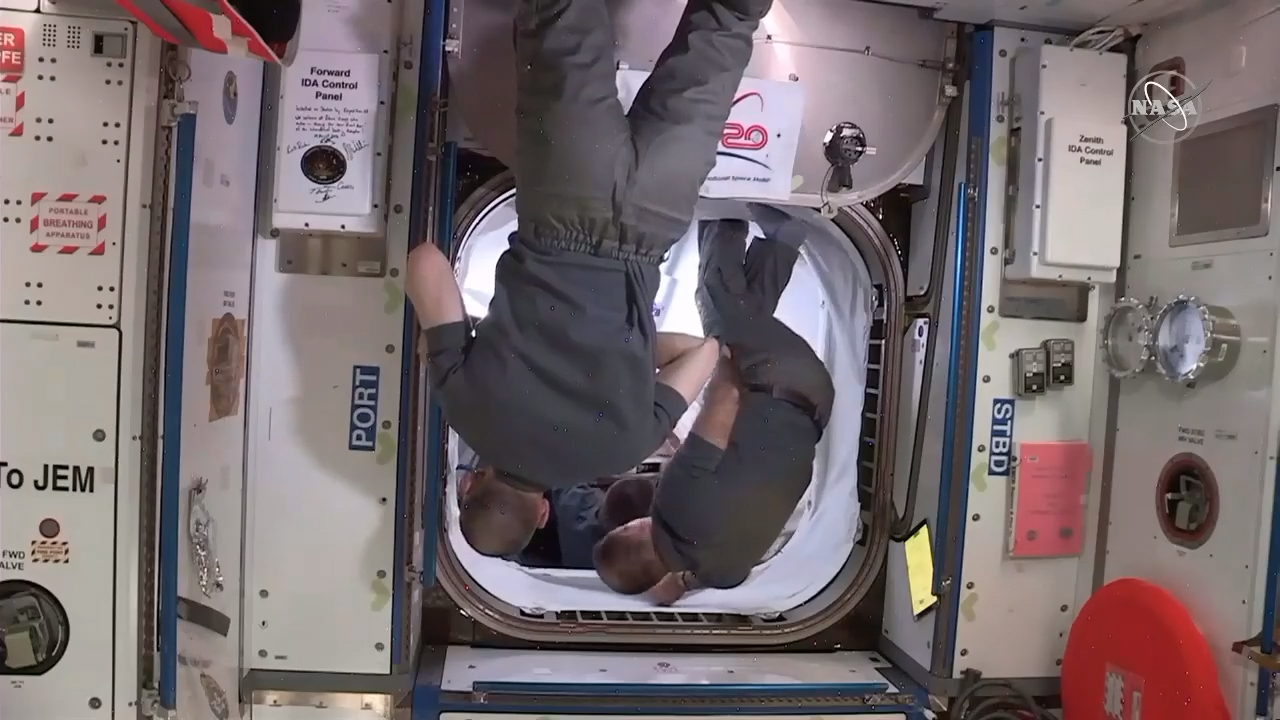
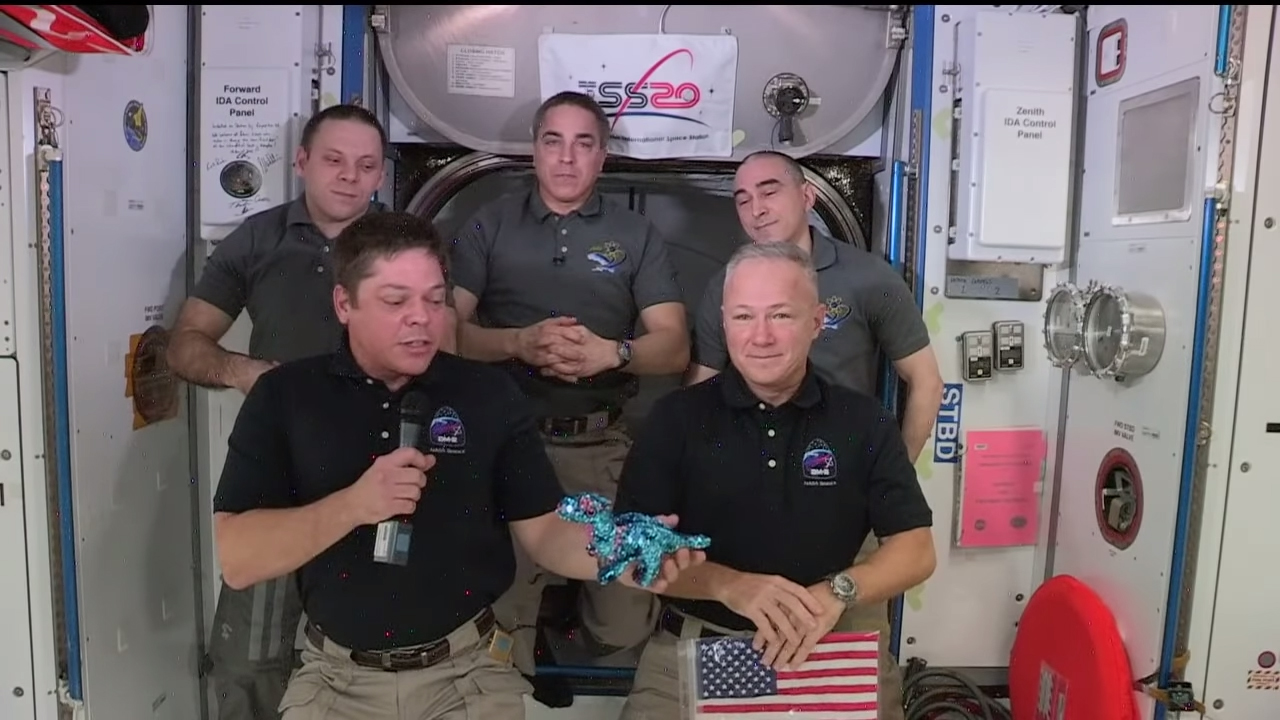
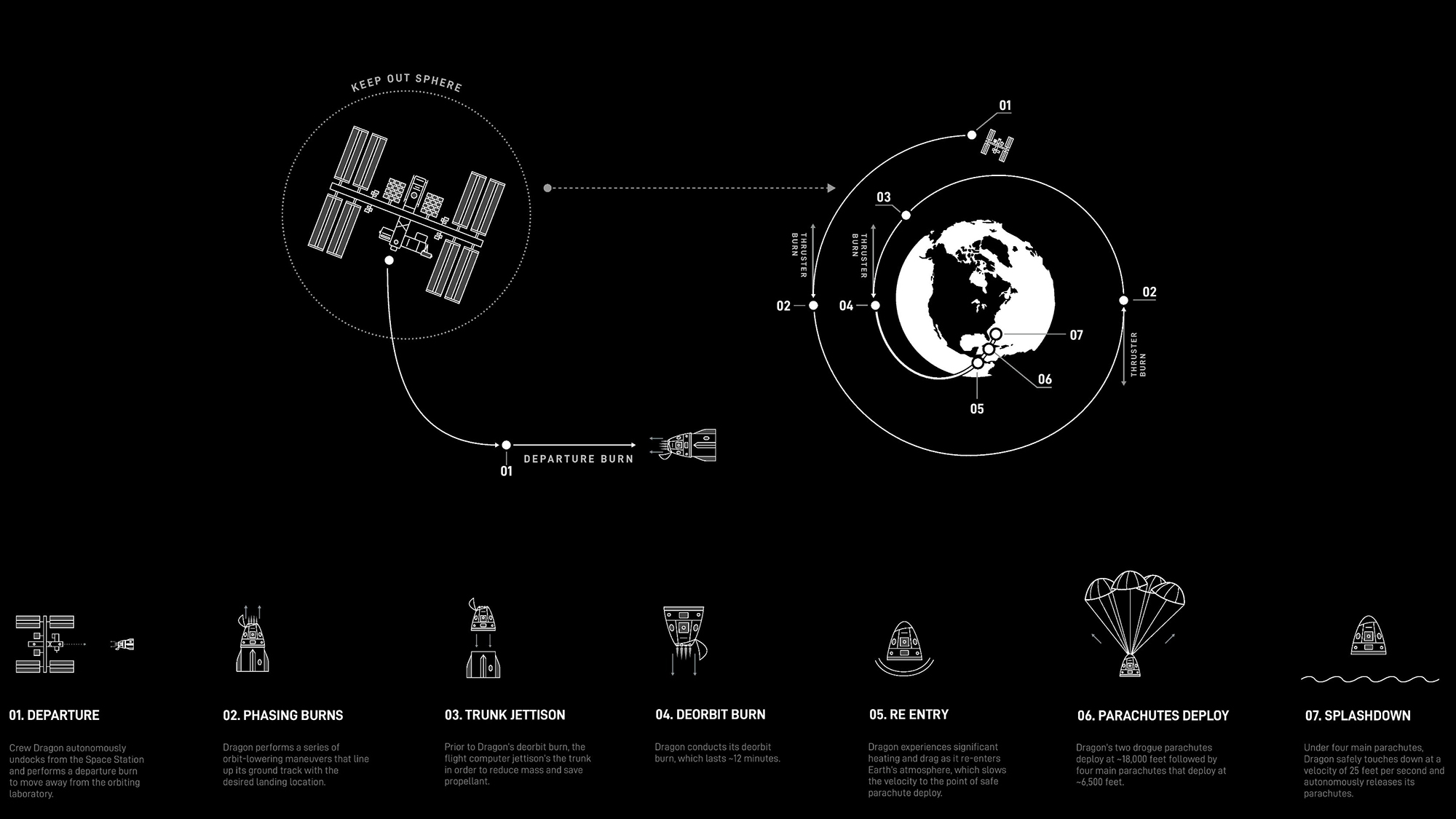
The Crew Dragon spacecraft, called Endeavour, should splash down off the coast of Pensacola, Florida on Sunday at approximately 2:41 p.m. EDT (1841 GMT). But that landing site is not set in stone; NASA and SpaceX have selected seven different possible splashdown sites for the crew's return, with four sites located in the Gulf of Mexico and three off of Florida's east coast.
The ground teams select the splashdown site based on the local weather conditions and other factors, like the amount of time it will take Crew Dragon to reach the area and the time of day that a splashdown might occur. According to a NASA fact sheet, the teams will "prioritize locations which require the shortest amount of time between undocking and splashdown based on orbital mechanics, and splashdown opportunities that occur in daylight hours."
Breaking space news, the latest updates on rocket launches, skywatching events and more!
About six hours before splashdown — and five hours before the spacecraft conducts a deorbit burn that will send it plummeting through the atmosphere — NASA and SpaceX will decide whether the weather is acceptable for a water landing. You can watch the landing live here on Space.com, courtesy of NASA TV.
If the weather isn't good enough, NASA and SpaceX will postpone the deorbit burn until it's safe to land. The Endeavour capsule has three days' worth of supplies before it has to come home, NASA officials have said.
Along with the two astronauts, there are 330 lbs. (150 kilograms) of cargo returning on the Crew Dragon. About 200 lbs. of that is science supplies, particularly biological samples that have been packed away into freezers.
"These samples are from a range of biological research experiments on the station dedicated to improving our understanding of how the human body adapts to microgravity or looking at ways to use space to improve life back here on Earth," NASA TV commentator Gary Jordan said in a live webcast of the undocking.
The astronauts have also captured an American flag, one left on the station by NASA's last space shuttle crew in July 2011 as a goal for the first commercial crew flight. They are also expected to return a small plush Earth toy, called "Earthie," that arrived on SpaceX's first unpiloted Crew Dragon test flight Demo-1 in 2019.
Behnken and Hurley are also bringing home Tremor the Apatosaurus, a toy dinosaur that the astronauts used as their zero-g indicator when they launched on May 30. The dinosaur was selected by Behnken's 6-year-old son Theo and Hurley's son Jack, who is 10.
"As I look forward to heading back home for the splashdown, I do think that from a family perspective, my son and Doug's son are really excited not only to get their fathers back but to get our apatosaurus, our 'zero-g indicator' that they nominated to go with us on this historic mission to the International Space Station," Behnken said early Saturday before undocking.
"So, for Jack and Theo, Tremor the Apatosaurus is headed home soon and he'll be with your dads," Behnken added. "You'll have to pick which one of us is your favorite."
Related: How NASA's Demo-2 astronauts will make a historic splashdown
If all goes well with Sunday's landing, SpaceX will be poised to start launching operational crewed missions to the International Space Station later this year. The Demo-2 mission, as its name suggests, was only a test flight to demonstrate that SpaceX's new vehicle can safely ferry astronauts to and from orbit.
SpaceX's first operational Crew Dragon mission, called Crew-1, is currently scheduled to launch in September, with four crewmembers on board: NASA astronauts Michael Hopkins, Victor Glover and Shannon Walker, and Japan's Soichi Noguchi.
Email Hanneke Weitering at hweitering@space.com or follow her @hannekescience. Follow us on Twitter @Spacedotcom and on Facebook.

Hanneke Weitering is a multimedia journalist in the Pacific Northwest reporting on the future of aviation at FutureFlight.aero and Aviation International News and was previously the Editor for Spaceflight and Astronomy news here at Space.com. As an editor with over 10 years of experience in science journalism she has previously written for Scholastic Classroom Magazines, MedPage Today and The Joint Institute for Computational Sciences at Oak Ridge National Laboratory. After studying physics at the University of Tennessee in her hometown of Knoxville, she earned her graduate degree in Science, Health and Environmental Reporting (SHERP) from New York University. Hanneke joined the Space.com team in 2016 as a staff writer and producer, covering topics including spaceflight and astronomy. She currently lives in Seattle, home of the Space Needle, with her cat and two snakes. In her spare time, Hanneke enjoys exploring the Rocky Mountains, basking in nature and looking for dark skies to gaze at the cosmos.
